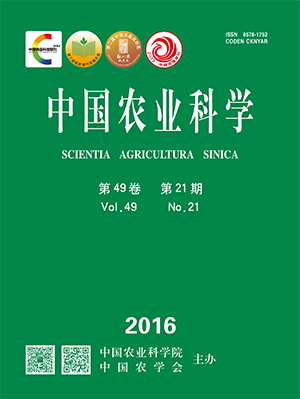-
Genetic Analysis of Traits Related to Cold Resistance in Winter Rapeseed (Brassica rapa L.)
- LIU Lin-bo, SUN Wan-cang, LIU Zi-gang, WU Jun-yan, FANG Yan, LI Xue-cai, ZENG Xiu-cun, YANG Gang, DONG yun, CHEN Qi, FANG Yuan, YUAN Jin-hai
-
Scientia Agricultura Sinica. 2016, 49(21):
4085-4095.
doi:10.3864/j.issn.0578-1752.2016.21.003
-
 Abstract
(
585 )
Abstract
(
585 )
 HTML
(
4 )
HTML
(
4 )
 PDF (429KB)
(
571
)
PDF (429KB)
(
571
)
 Save
Save
-
References |
Related Articles |
Metrics
【Objective】The objective of this paper is to understand genetic way and to provide a theoretical foundation of cold resistance traits in winter rapeseed (Brassica rapa L.). 【Method】 In this study, six winter rapeseed cultivars with different cold resistances were used as parent materials to make complete diallel cross combinations with the Griffing methodⅠ. The parents and F1 generations were planted to obtain the data of cold resistance traits. By using the additive-dominant model and MINQUE(1) method, the genetic variance, genetic correlation, parent additive effects, combination dominant effects and heritability, and heterosis of over wintering rate and 11 traits in winter rapeseed were analyzed.【Result】Over wintering rate, POD activity, SOD activity, SS content, relative electrolytic leakage, chlorophyll content, transpiration rate and stomatal conductance were mainly controlled by additive effects, and dominant effects were much less important. The dominant effects prevailed in the traits of CAT activity, MDA content, SP content and net photosynthetic rate. Over wintering rate was detected to be significantly and positively correlated with CAT activity, POD activity, SOD activity, SP content, SS content, chlorophyll content, transpiration rate, stomatal conductance and net photosynthetic rate, but negatively correlated with MDA content and relative electrolytic leakage. Longyou 7 and Longyou 8 had positively additive effects in the traits of overwintering rate, CAT activity, POD activity, SOD activity, SP content, SS content, chlorophyll content, transpiration rate, stomatal conductance and net photosynthetic rate, which indicated Longyou 7 and Longyou 8 could be used as parents that improved cold resistance of generations. The results of dominant effects analysis showed that Longyou 7×GY and Longyou 7×Longyou 8 had stronger cold resistance. As for the narrow heritabilities, SOD activity, relative electrolytic leakage, transpiration rate and overwintering rate were 74.63%, 59.06%, 57.49% and 56.87%, respectively, and CAT activity was the lowest (2.83%). CAT activity, SP content and net photosynthetic rate had stronger population mean heterosis and population over-parent heterosis. 【Conclusion】Overwintering rate, SOD activity, relative electrolytic leakage and transpiration rate were used in selection at early generation. Among the 6 elite breeding lines, Longyou 7 was recommended for using as direct parental line due to its higher general combining ability in cold resistance traits.









